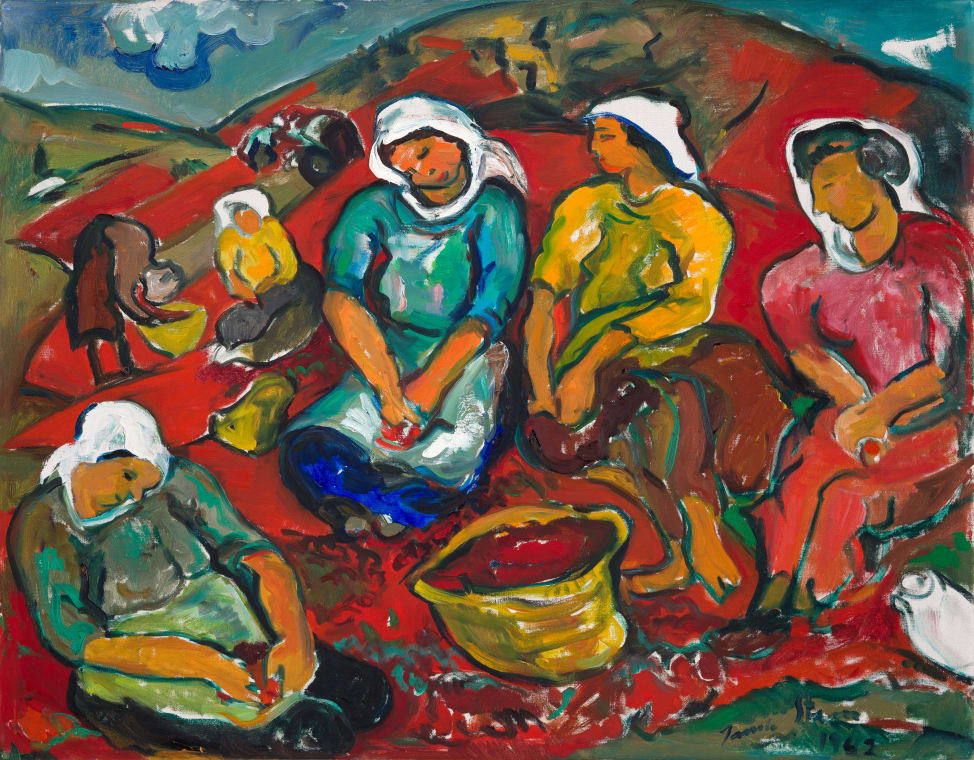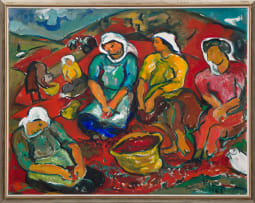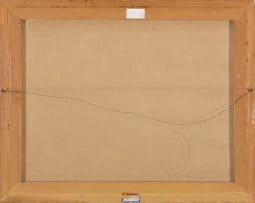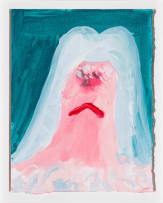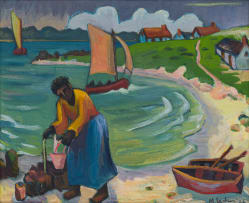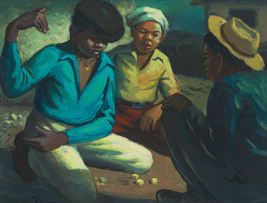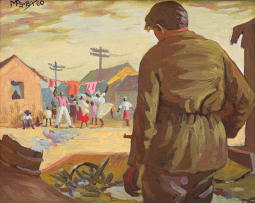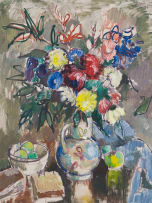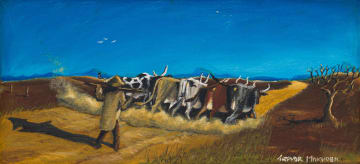Perspectives on Africa
Live Virtual Auction, 17 February 2025
Perspectives on Africa
About the SessionStrauss & Co is pleased to present Perspectives on Africa, a sale that explores the complexity, beauty, and fluidity of perspectives through African art and works by artists with strong ties to the continent. The sale coalesces the rich and varied connections between Africa and its artistic expressions, presenting works that span figuration, landscape, and abstraction, inviting collectors to engage with powerful narratives emerging from Africa's evolving perspectives. The works reflect layered meanings, both as a method of representing depth and dimension as a way of framing our understanding of the world. Work by Contemporary artists reflects on the historical foundations of Modernist artists, exploring themes such as identity, belonging, urbanisation, and re-encounters with tradition, while the sale transitions to Modernist interpretations of Africa, exploring the complexity of colonial encounters, post-independence aspirations, and indigenous practices. Building on Strauss & Co’s commitment to developing a strong local photography market, the sale includes an artist focus on the work of social documentarian Paul Alberts, whose images captured poignant narratives of everyday life, particularly in Cape Town. These works sit alongside David Goldblatt and Zanele Muholi, whose visceral images explore themes of identity, social justice and the multifaceted realities of African life.
About this Item
signed and dated 1962
Provenance
Acquired from the artist by Professor and Mrs J N De Villiers and thence by descent.
Literature
Rembrandt van Rijn Foundation (1968) Homage to Irma Stern 1894-1966, exhibition catalogue, Rembrandt van Rijn Foundation, a similar example illustrated in black and white, cat. no. 77.
Marion Arnold (1995) Irma Stern: A Feast for the Eye, Cape Town: Fernwood Press, illustrated in colour on page 92.
Standard Bank Gallery (2003) Irma Stern: Expressions of a Journey, exhibition catalogue, Johannesburg: Standard Bank Gallery, a similar example illustrated in colour on page 153, with the title Pimento Harvest.
Iziko Museums of South Africa (2015) Brushing up on Stern, Cape Town: Iziko Museums of South Africa, a similar example illustrated in colour on page 40 and 115, with the title Pimento Harvest.
Sandra Klopper (2017) Irma Stern: Are You Still Alive? Stern's Life and Art Seen Through Her Letters to Richard and Freda Feldman, 1934-1966, Cape Town: Orisha Publishing, a similar example illustrated in colour on page 190, fig 137, with the title Pimento Harvest.
Notes
Scenes of agricultural labour, particularly involving women, feature prominently across Irma Stern's career. From her romantic, high expressionist fruit pickers of the 1920s to the gestural, thinly painted works of the 1960s created in Spain, these themes persisted. Stern's 'Harvest scenes' from 1962 are especially admired and regarded as among her finest late works. This richly detailed lot, dominated by four Spanish women seated on a vibrant red landscape, picking heart-shaped cherry peppers either sold fresh or ground into paprika, exhibits the virtues of 'elegance, sureness of touch, economy of technique' that art historian Heather Martienssen admired in Stern's late work.1
Stern's roaming habits as an artist led her to this scene. In her later years, despite struggling with ill health, Stern spent extended periods in
Europe, enthusiastically painting Mediterranean scenes, notably harbours and beachgoers in France and farm workers in Spain. In 1961,
Stern visited Alicante, a port city on Spain's southeastern Costa Blanca, where she was captivated by the town's lingering Arab influence.
She immediately rented a hotel suite, converting the sitting room into a makeshift studio and working intensely for six months.2
Stern was particularly drawn to the 'lively, gay and well-dressed' women and girls labouring in Alicante's thriving tomato and pimento industry, engaging in tasks such as trellising and picking.3 She often drove out to the fields to sketch these workers, later transforming her observations into paintings in her studio, a method she detailed in various press interviews. Examples of canvases from Stern's first visit to Alicante were exhibited in Cape Town in 1961 and 1962, receiving critical acclaim. One reviewer compared Stern's achievements to those of Van Gogh in Arles.4
In 1962, Stern returned to Alicante during a nine-month European tour. Her new work was exhibited at Cape Town's Association of Arts Gallery in March 1963, earning similarly enthusiastic reviews. Critic Matthys Bokhorst, later director of the South African National Gallery,
admired the 'strong, bright colour' and 'exuberant outburst' of this vibrant 'Spanish interlude'.5 The style and execution of Stern's late works
have been the subject of much posthumous commentary. Neville Dubow singles out Stern's 'Harvest scenes', characterising them as 'lyrical
figures-in-landscape compositions, loosely knit, yet held together by sweeping rhythms that bind earth, workers and sky.'6
1. Heather Martienssen (1968) 'The Art of Irma Stern', Lantern, December, 18(2), page 31.
2. - (1961) 'Irma Stern paints in Spain', The Cape Argus, 20 March.
3. - (1961) 'Spanish Tomato Girls Were Her Liveliest Models for Pictures', The Cape Argus, 28 August.
4. Matthys Bokhorst (1961) 'Art Show is the Result of Six Months' Activity', The Cape Times, 5 September.
5. Matthys Bokhorst (1962) 'Irma Stern Show: Milestones of 20 Years' Work', The Cape Times, 19 February.
6. Neville Dubow (1974) Irma Stern, Cape Town: C. Struik Publishers, page 21.
